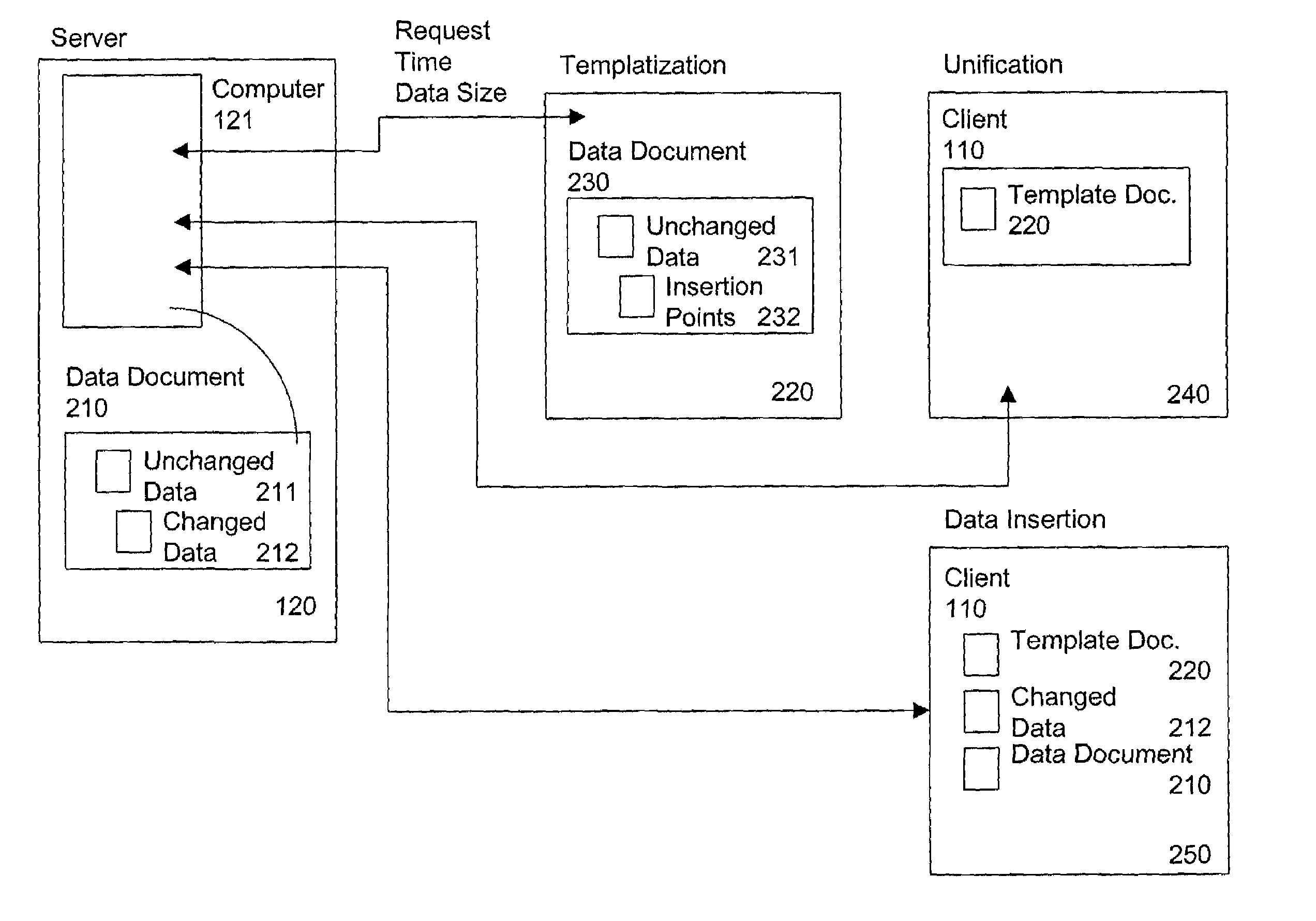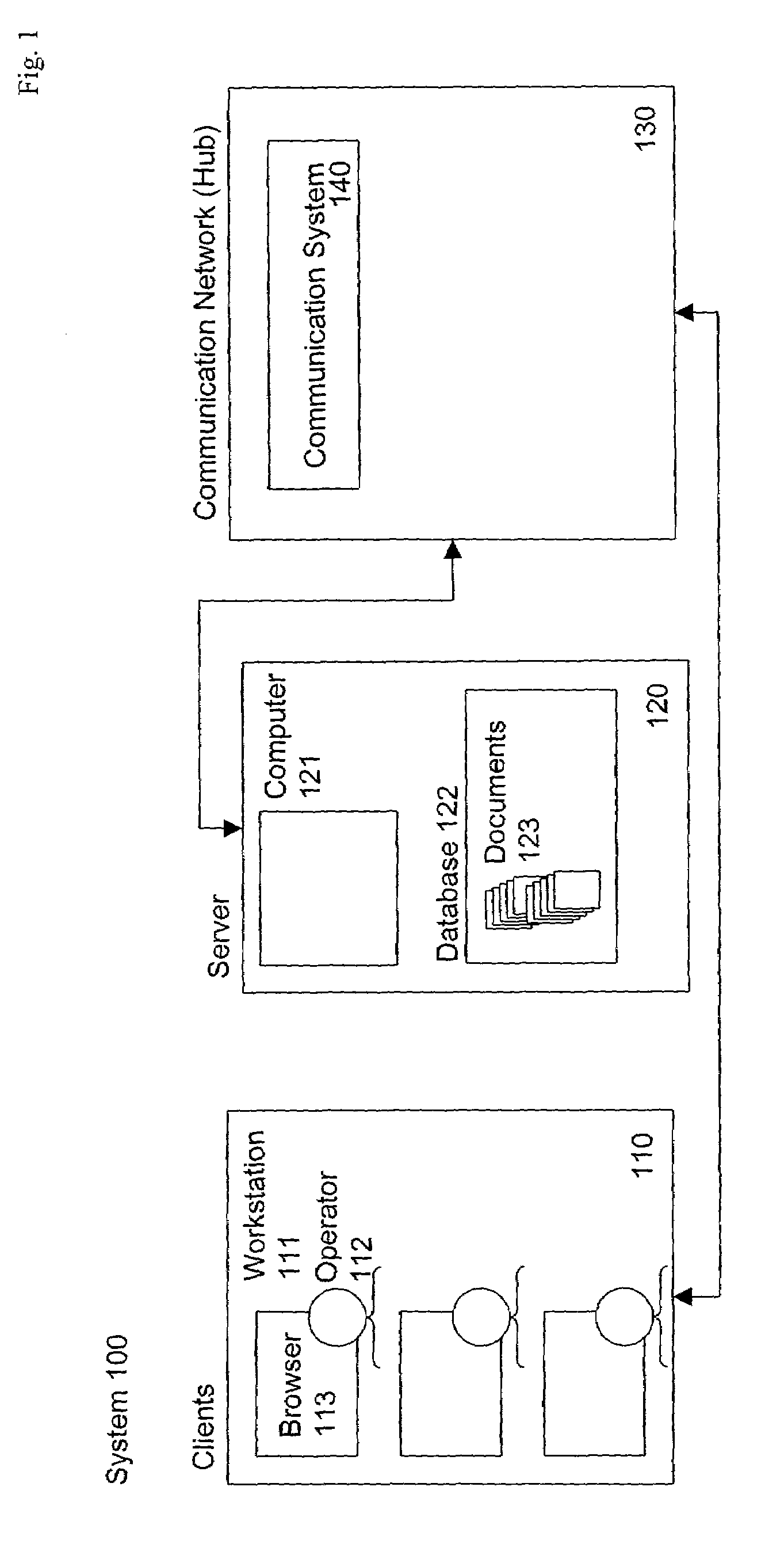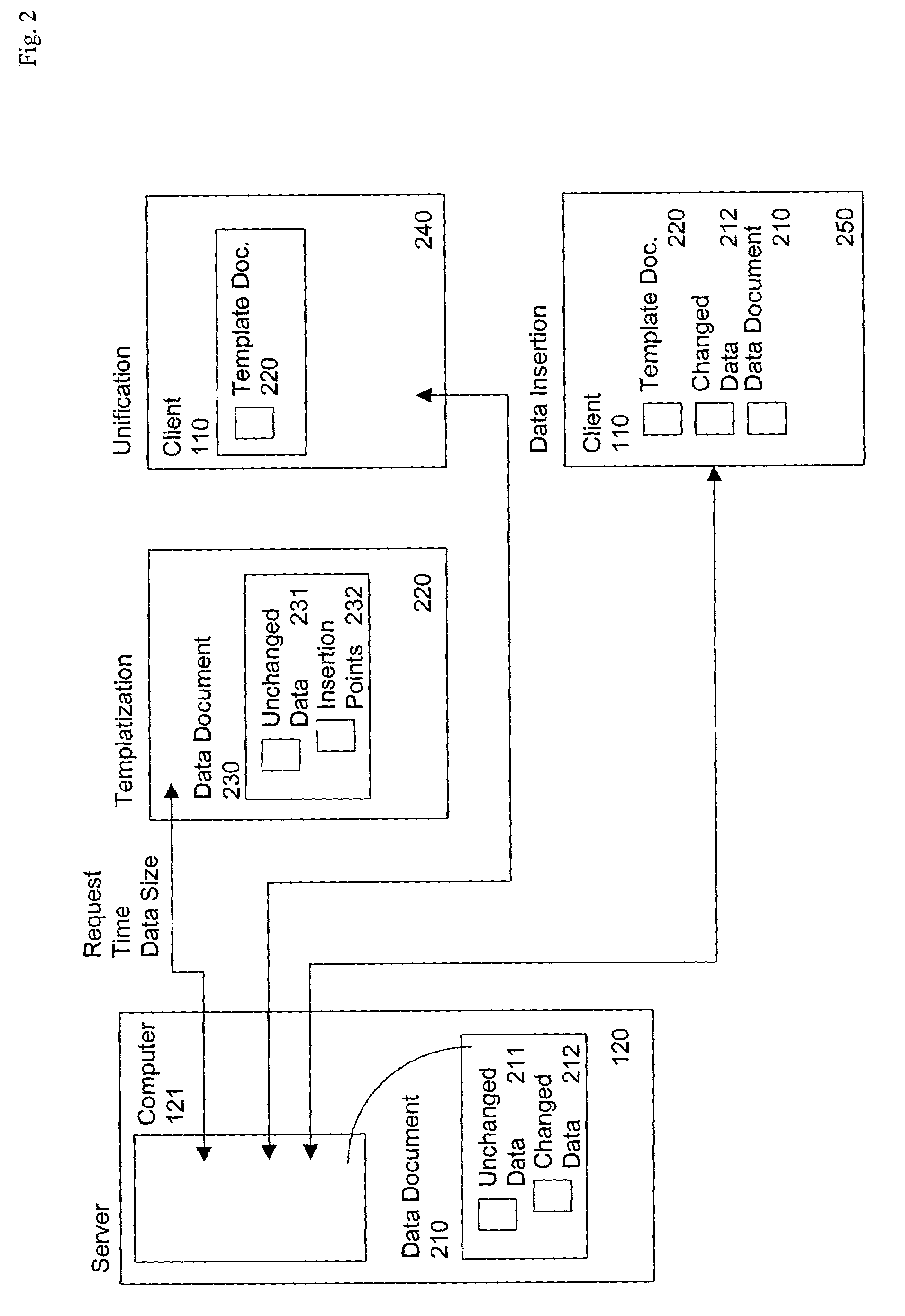Server-originated differential caching
a server-based, differential caching technology, applied in the field of differential caching, can solve the problems of not being able to obtain substantial advantages and inability to provide information that is not identical, and achieve the effect of minimizing tim
- Summary
- Abstract
- Description
- Claims
- Application Information
AI Technical Summary
Benefits of technology
Problems solved by technology
Method used
Image
Examples
Embodiment Construction
[0024]The invention is described herein with regard to preferred steps and data structures. Those skilled in the art will recognize, after perusal of this application, that the described steps and data structures are not limited to any particular processing devices (whether general-purpose or special-purpose processing devices, or specific circuitry). Rather, those of ordinary skill in the art would be able to implement the described steps and data structures, and equivalents thereof, without undue experimentation or further invention. All such implementations are within the scope and spirit of the invention.
Lexicography
[0025]The following terms refer or relate to aspects of the invention as described below. The descriptions of general meanings of these terms are not intended to be limiting, only illustrative.[0026]client and server—As used herein, the phrases, “client” and “server” refer to a relationship between two devices, particularly to their relationship as client and server,...
PUM
 Login to View More
Login to View More Abstract
Description
Claims
Application Information
 Login to View More
Login to View More - R&D
- Intellectual Property
- Life Sciences
- Materials
- Tech Scout
- Unparalleled Data Quality
- Higher Quality Content
- 60% Fewer Hallucinations
Browse by: Latest US Patents, China's latest patents, Technical Efficacy Thesaurus, Application Domain, Technology Topic, Popular Technical Reports.
© 2025 PatSnap. All rights reserved.Legal|Privacy policy|Modern Slavery Act Transparency Statement|Sitemap|About US| Contact US: help@patsnap.com



